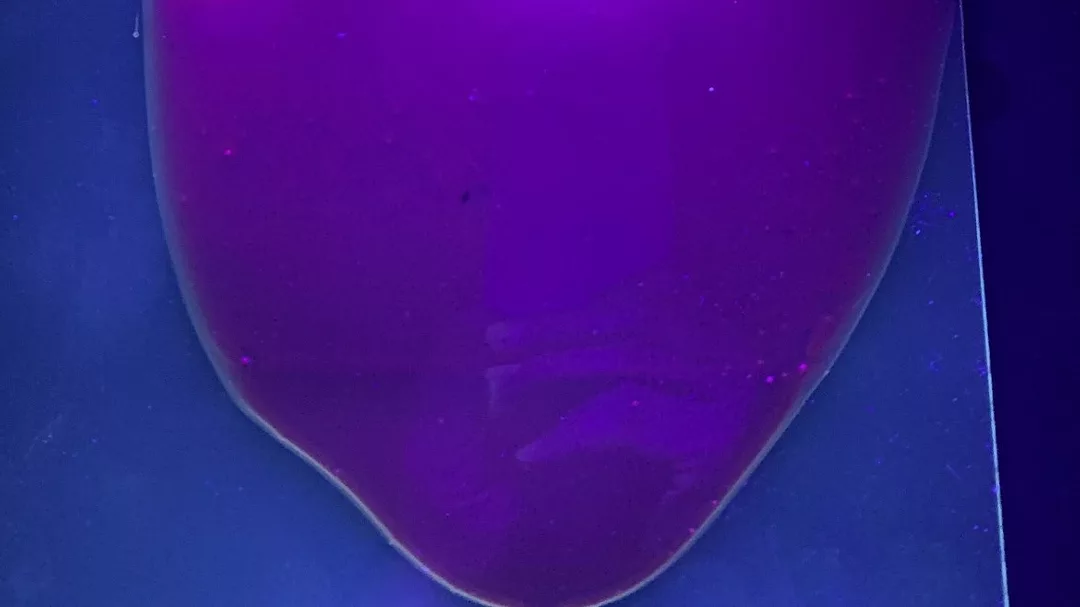Research and Development
Quantum Dot Film Claims to Accelerate Plant, Agricultural Crop Growth

Quantum dot on the glass (left) under room light (right) under UV light in a room. Image courtesy of Green Science Alliance

Quantum dot film under UV light irradiation in a dark space. Image courtesy of Green Science Alliance
Green Science Alliance’s Hirohisa Iwabayashi and Dr. Ryohei Mori have developed quantum dot and quantum dot film that reprtedly can convert ultraviolet (UV) light, blue light with shorter wavelength, into red light. They have mainly applied CIS (CuInS2) / ZnS quantum dot for red light emitting film. This environmentally friendly quantum dot is mainly water based before coating on the film. Developed films can speed up plants and crops growth because this film emits more red light under the sun light, the company claims. This utilizes wavelength light for plant growth for efficient agricultural crops.
Plants absorb CO2 and make oxygen and starch by the process called photosynthesis with the help of solar light irradiation. In fact, plants are utilizing not all of solar light and they prefer mainly blue and red light in the solar light for their photosynthesis and growth. Plants and plant leaves look green because they reflect green light since they do not use green wavelength color in the solar light. Recently, it is known that tomato likes magenta color, rose like whitish color and chili pepper prefer yellowish color for their growth.
Quantum dots are tiny materials (0.5 - 9 nm) with optical properties that follow the rules of quantum chemistry and quantum mechanics. These quantum dots are also called "artificial molecules" because each quantum dot is composed of several dozen to thousands of molecules. At this size range, the energy levels of electrons are no longer continuous and are separated due to the quantum confinement effect.
The quantum dot film can be used on windows, film sheets for greenhouses and hot houses for plant growth. This also can be placed on LED lights for plant factories. Quantum dot types and synthesizing procedure can modify emitting light wavelength to red light and other wavelength lights.
Green Science Alliance says it is planning to carry out testing at greenhouses, hot houses and agricultural fields. It also is looking for business partners to perform these tests.
Looking for a reprint of this article?
From high-res PDFs to custom plaques, order your copy today!





